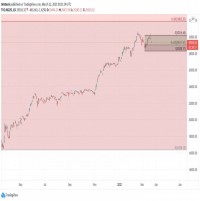|
Opalesque Industry Update – The bigger they are, the harder they fall. A new study by Spring Mountain Capital, LP (SMC), a New York-based investment management firm with $2bn in AuM and advisory, has shown that bigger hedge funds tend to generate lower alpha than smaller funds and will exploit market volatility to a weaker degree than do smaller funds. At the same time, the proprietary white paper titled “The Relation Between Hedge Fund Size and Risk,” which studied data from 7,545 existing funds (as well as 8,916 hedge funds that have seized to exist), also showed that large funds compensate for their lower alpha and inability to exploit volatility by having higher beta. “Large hedge funds may be perceived as less risky than smaller ones, but our research and experience suggests that this focus may be misplaced; and in the future, the opportunity costs of investing in large funds may be higher and the safety benefit of investing in large funds may be lower than investors currently expect,” said Jason Orchard, co-author of the white paper and a Principal at SMC. Haim Mozes, Ph.D, a senior consultant with SMC and an Associate Professor of Accounting at Fordham University in New York, co-authored the study. The two researchers concluded that investors have misconceptions regarding investing their money with large hedge funds because they are drawn to a false safety and liquidity advantages. But Orchard and Mozes said they identified a number of factors that increase a large fund’s risk profile relative to its smaller peers. Managers of large funds are confident that good performance will be maintained, therefore warding off investor redemptions, but “eventually, fund size will hinder performance enough to trigger a redemption cycle that has a strong negative feedback loop.”
Key highlights of the study • Large funds typically underperform their peer group for more than three years prior to closing and a decline in fund-raising typically precedes a fund’s performance decline. For smaller funds, the decline in fund raising typically follows a decline in performance. • In current markets, funds in the 90th percentile of reported assets under management (approximately $750M) offer very little marginal benefit from increased size. “Ultimately the research concludes that very large hedge funds may eventually have to transition to a private equity model, where capital is locked up for long periods of time, or to an investment banking model, in which capital is permanent and accessible via the public markets, in order to avoid closing,” said Mozes added.
Spring Mountain’s research is contrary to conventional wisdom In September, Absolute Return (AR) released a study that showed the largest U.S. hedge funds, led by the $51-bn Bridgewater Associates, secured the largest inflows in the first half of 2010 compared with rivals. The firm piled up an additional $7.3bn in new money or an increase of 17% in its AuM, the biggest gain in 2010. Other large hedge funds that reported inflows were JP Morgan's asset management unit with $2.7bn inflows (raising its assets to $41bn); George Soros' Soros Fund Management; Och-Ziff Capital Management Group; BlackRock; Angelo, Gordon & Co; Seth Klarman's Baupost Group, and Thomas Steyer's Farallon Capital Management. Each firm manages $20 billion or more, the AR Magazine reported. In an interview with Matthias Knab of OpalesqueTV in September, Narayan Naik, Professor at the London Business School and Director of the Hedge Funds Centre, also noted that hedge funds of funds’ allocations to bigger funds are increasing. Naik told Opalesque that he tracked the concentration of assets across fund managers from the year 2000 through December 2009 and found that the concentration continue to increase over that time, and grew from the top 10% of managers overseeing 75% of the hedge fund industry's assets to the top 10% of managers overseeing 85% of the hedge fund industry's assets (See Opalesque Exclusive: here). Last month, Hedge Fund Research reported that almost all new capital inflows from investors were concentrated to large hedge funds, particularly with more than $1bn in assets. Data from HFR revealed that large hedge funds control at least 60% of all hedge-fund assets.
PerTrac: small to mid-sized hedge funds outperformed in 2009
“Coming off the worst calendar year losses in history in 2008, the hedge fund industry provided investors with a strong comeback in 2009. According to our research, the rally was led by the younger funds,” said Jeff Hendren, Co-President of PerTrac. “When we looked at performance according to the size of a fund, our research revealed that the small and mid-sized funds achieved the highest performance. These two findings are likely related because fund size tends to correlate with fund tenure.” |
Industry Updates
Spring Mountain Capital: Big hedge funds more vulnerable
Friday, November 12, 2010
|
|





 RSS
RSS







